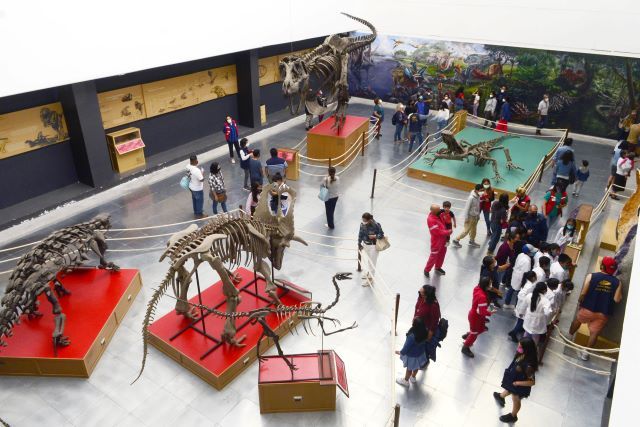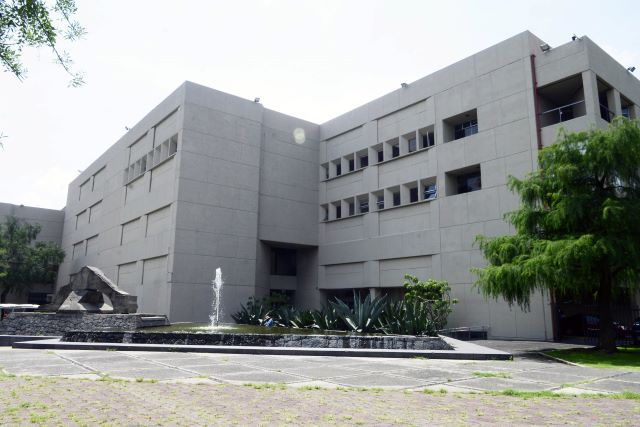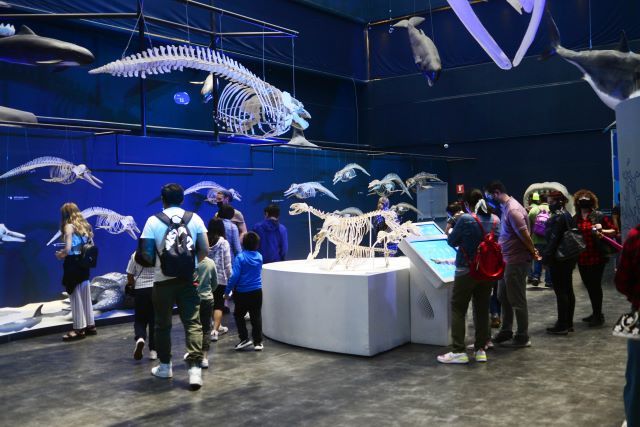Universum Science Museum, 30 years of bridging disciplines
Its rooms are always getting updated, and work is done to keep it that way. During this time, more than 14 million people have visited Universum. It has more than met its goal of being a living space for scientific culture, a place to look, touch, learn, and practice.

For Universum, UNAM's Science Museum, a young facility about to celebrate its 30th anniversary, the renovations are important; they prevent it from becoming a "mausoleum" and allow it to show the advances in science.
What the school public or a family is looking for when they come to the campus is that the university "gives them the most updated face of knowledge, and that is where we try to stay at the forefront," says its director, Mara Emilia Beyer Ruiz.
We have struggled to renovate spaces and keep them up to date; "showing the public that you don't have the same contents as 10 years ago is what constantly attracts visitors," an average of half a million a year, she adds.
Today, there are 13 permanent halls and two temporary exhibitions on 12,000 square meters of space. To celebrate its first 30 years, it will open a technology pavilion that will include augmented reality.
In 1989, the idea of a museum, "conceived, realized, and then operated by men and women of science," was a project: that of a space that "should be active and interactive; it would have rooms for exact and natural sciences; it would mix art with science, and it would cater to a wide range of audiences."
On Saturday, December 12, 1992, Universum opened its doors, crystallizing a desire to popularize science that had been planned for almost 10 years. Thirty years after its inauguration, it has more than fulfilled its mission: to be a living precinct of scientific culture, a place to look, touch, learn, and rehearse, which has been visited by more than 14 million 300,000 visitors.

Evolution of Universum Science Museum
It is impossible to think of what has been achieved without mentioning the name of Luis Estrada, promoter and teacher of the first generations of science communicators at UNAM and founder and director of the University Center for Science Communication, the predecessor to the current General Directorate for the Dissemination of Science (DGDC).
Although at the beginning only radio programs and magazines were held there, the Universum project acquired importance and visibility when the building that housed the Conacyt was assigned to the Science Museum during the rectorship of José Sarukhán Kermez, under the command of Jorge Flores Valdés. In the beginning, its rooms were: structure of matter, mathematics, energy, biodiversity, agriculture, ecology, human biology and health, animal behavior and society, and astronomy.
Its growth and renovation have been interesting. "Universum emerged with the vision of supporting formal education and fostering scientific vocations in young people." For this reason, several of the initial efforts were aimed at attracting high school students, so that they could playfully face science and consider studying for a career in this area. Although this was one of the main lines of work and continues to be in force, "reality prevailed."
Studies of the public showed that the average visitor was a 14-year-old high school student. Thus, "we have transformed ourselves by attending not only to what we want to emit as a message but also by understanding the needs and expectations of all types of public and designing activities and experiences that suit them," she says.
In the same exhibition, there can be different discursive levels, and it is possible to raise a series of questions and dialogues between the objects we exhibit and those who look at them, regardless of age range, schooling, or particular interests. Having exhibitions with different reading levels has proven to be a success over the last 30 years.
Being playful, "we became a space for family visits, especially on weekends; the treatment of the younger public implied the design of fun and different experiences, and an agile, dynamic, and changing attention." That is why 22 years ago the Children's Space was inaugurated for babies and children from zero to six years of age, although due to the pandemic it remains closed.
"We have learned to take a scientific concept, such as "ecosystem" or "biodiversity," and communicate it through different strategies, spaces, and corners of the museum, regardless of the level: high school, middle school, or young children.
Universum evolved in the presentation of the themes because science is not pigeonholed but shared and communicated, and the social sciences are also present. Therefore, in the last three years, "we have tried to break down the boundaries of knowledge that, in reality, are not given but rather established by a school curriculum, for example, and establish narrative threads that connect the rooms."
The permanent exhibitions are Physics; Water, element of life; Mathematical Imaginary; R3, reduce, reuse, recycle; The Brain, our bridge to the world; Chemistry is in everything, which includes the Baylab, a laboratory in collaboration with Bayer company where teenagers and young people can do experiments; the universe; habitat; evolution; life and time; health; life in balance; in addition to sexuality. And as part of the recent renovation of the museum, there are rooms dedicated to the ocean and treasures, including fossils and minerals from Mexico.
In September, the room Decide: Your Space, Your Ideas was inaugurated, which shows how we can try to solve the problems we face, and in 2023, "we would like to have an "escape room" type experiences, where there is a challenge to be solved using the scientific method."

Success story
The largest number of visitors to Universum depends on temporary exhibitions and renovations to the site. One of the best parts was the Body Worlds exhibit. Gunther von Hagens invented a way to preserve things called "plastination," which let people see the human body in a way that had never been seen before.
"It attracted such a large number of visitors that we had to learn more agile and versatile formats for public attention." Also, just like in that case, the precinct is always looking for allies, both at home and abroad.
As an example, to kick off the celebrations for the museum's 30th birthday, the Natural Histories: 400 Years of Scientific Illustration exhibition, which was brought from New York and ran from June to October of this year, was shown. This exhibition showed images that were made to spread knowledge through scientific illustration by some of the most famous naturalists of the time.
From August 2022 to March next year, the photographic exhibition Birds of Pedregal, which is accompanied by some artistic pieces, audiovisual materials, and, of course, the singing of some specimens, will be on view.
Microsoft also joined the celebration with the development of a state-of-the-art project for the museum's garden, called "Smart Garden", in which visitors can interact with the crops and learn about the monitoring tools and how they can help food production.
Similarly, in November, the neuroscience festival "Neurofest" was held, which addressed what happens to the brain when it is celebrated. In collaboration with the Telefónica Foundation, a show about the science of color will open as part of the celebration.
From January to August 2022, five new spaces or exhibitions opened thanks to the hard work and dedication of Universum's collaborators: graphic and industrial designers, architects, scientific advisors in the natural and social areas, disseminators, museographers, writers, illustrators, artists, educators, etc. Museums like this "transcend borders and unite disciplines and professionals," says María Emilia Beyer.
A planetarium, butterfly house, theater plays with scientific themes, conferences, workshops, and an educational outreach program outside the museum's facilities, in schools, or cultural centers, for example, called Universum 360º, complete the offer that the Science Museum makes to the public.




